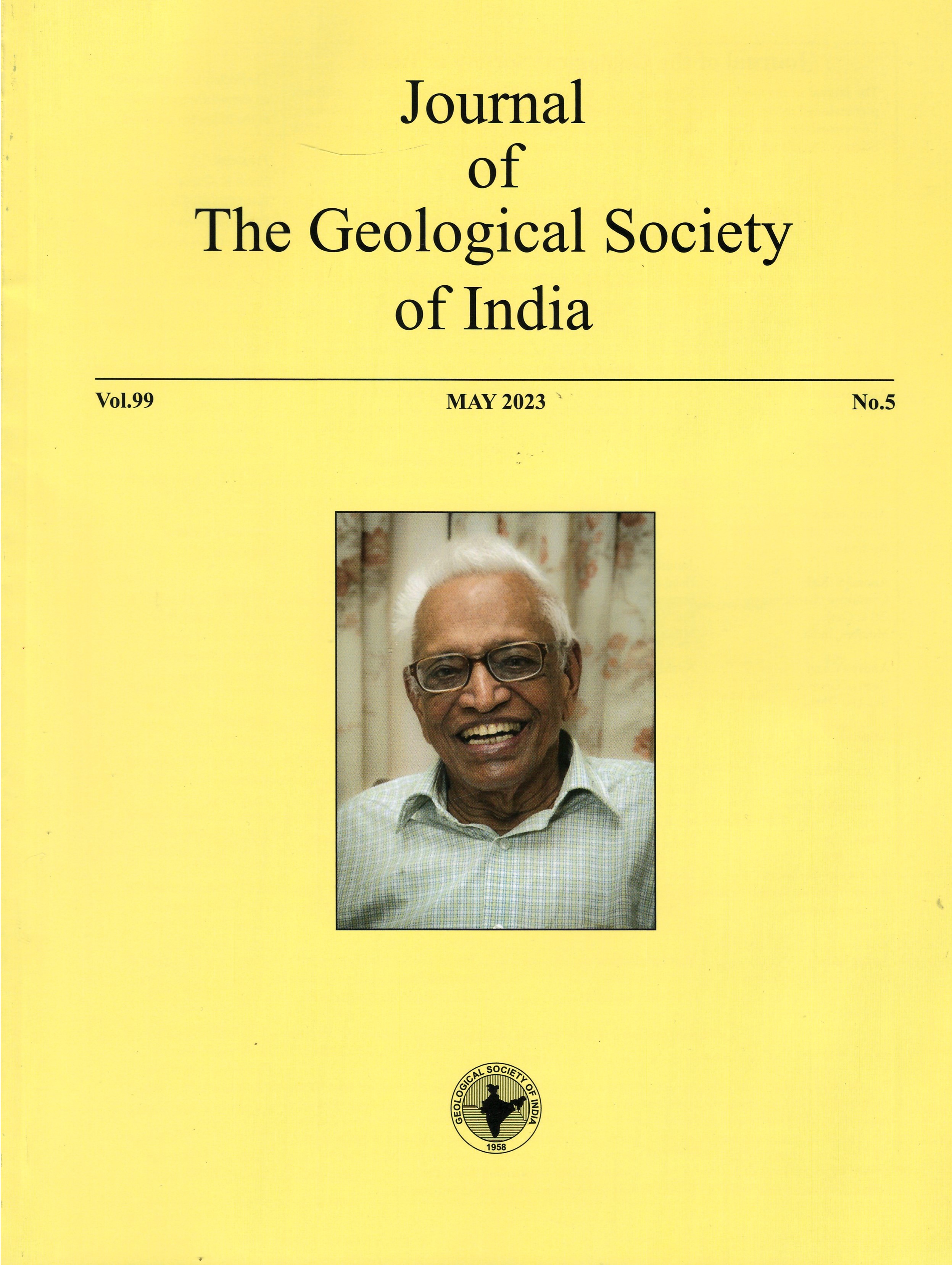Multidisciplinary Analysis to Interpret the Palaeoclimate and Depositional Environment of the Late Paleozoic Post-Glacial Sediments from Wardha Basin, Maharashtra, Central India
DOI:
https://doi.org/10.1007/s12594-023-2364-3Keywords:
No Keywords.Abstract
A multidisciplinary analysis has been applied to subsurface samples from borehole MAWP 114, Wardha basin, Maharashtra State, central India, in order to characterize the palaeoclimatic and local depositional conditions during the deposition of the Permo-Carboniferous Talchir Formation. Based on palynology, palynofacies, TOC (Total organic carbon) and δ13C analyses five types of palaeoclimatic phases and local depositional conditions have been envisaged within the studied sequence. In palynofacies type I (P-I), the dominance of AOM and scarce palynomorphs of upland xerophytic affinity (represented by primitive conifers such as Potonieisporites) suggests deposition during the earliest phase of a glacial retreat in distal anoxic conditions. In P-II dominance of AOM with moderate increase in palynomorphs and phytoclasts suggests amelioration in climate and deposition during a mid interglacial phase under dysoxic to suboxic conditions. In P-III, increase in palynomorphs and phytoclasts and decrease in AOM suggests deposition in a median distal to proximal setting under warm temperate conditions during late interglacial phase. P-I to P-III have been demarcated in a shale sequence. P-IV is demarcated in the overlying sandstone-shale intercalation, characterized by predominance of non-opaque phytoclasts of the pitted and banded type, subdominance of spore and pollen and low frequency of AOM and suggests deposition in proximal oxic conditions during final deglacial phase under high energy settings. P-V recognized in sandstones, comprising of dominance of terrestrial AOM and scarce palynomorphs and phytoclasts suggests deposition in post glacial fluvial, under anoxic to dysoxic setting. These climatic shifts are also supported by geochemical results from TOC (0.3%-2.2%) and δ13C (-24.9‰ to -21.4‰) analyses, as both reflect palaeo-atmospheric fluctuations in accordance with direct impact of glaciation and deglaciation episodes on biotic communities along the studied interval.

 Pauline Sabina Kavali
Pauline Sabina Kavali






